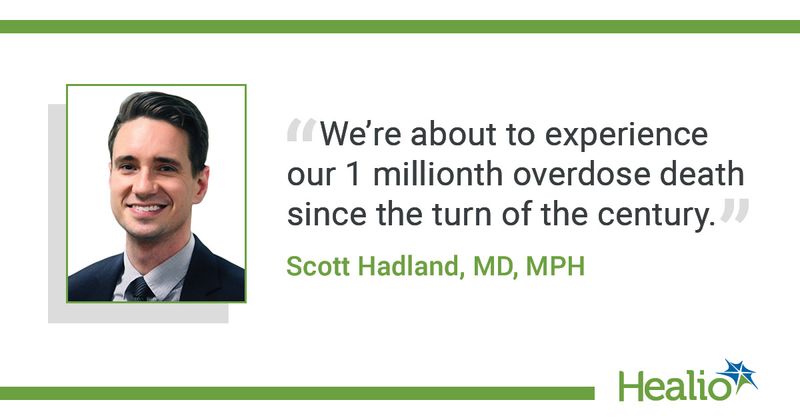Three ways pediatricians can tackle the opioid epidemic head on
Click Here to Manage Email Alerts
ANAHEIM, Calif. — There are three ways a primary care pediatrician can tackle the opioid epidemic head on, according to an expert on addiction in young people.
Scott E. Hadland, MD, MPH, division chief of adolescent and young adult medicine at Massachusetts General for Children and Harvard Medical School, delivered the advice in a plenary session at the AAP National Conference & Exhibition.

“The U.S. is silently about to surpass a really grim milestone, and that is that we're about to experience our 1 millionth overdose death since the turn of the century,” Hadland said. “Last year, more than 100,000 Americans died of an overdose in this country, and as a pediatrician who takes care of young people who struggle with addiction in my practice, right in our primary care environment, I see the power that pediatricians can have to do their part to take this on.”
Hadland presented data showing that overdose deaths among teens aged 14 to 18 years have increasingly been caused by fentanyl, reaching a peak of just more than four deaths per 100,000 patients in the age group in 2021.
“[Fentanyl is] at least 50 to 100 times more potent than heroin, and it now comprises about 75%, or about three-quarters of all opioid overdose deaths in teens,” Hadland said.
“It’s actually a poly-substance use crisis because it is now more common for a teen to overdose not just on opioids alone, but opioids plus something else,” Hadland said. “Most commonly it's cocaine, second most commonly it's a benzodiazepine.”
Hadland suggested three ways to tackle the crisis head on in practices. The first is by having primary care physicians screen for substance use and use a validated tool to gauge a patient’s likelihood for any existing issues with substances. In his practice, patients privately fill out screening documents on iPads regarding how frequently they use alcohol, cannabis or tobacco upon arrival for their appointments. Use of these three substances “once or twice monthly” or “weekly” could indicate more serious issues, Hadland said
“[Opioid addiction] is exceedingly rare for a young person who has never tried tobacco, alcohol or cannabis, and so if a young person isn't using any of those substances, just stop right there,” Hadland said. “But if they have used one of those substances [and] if they're using monthly, that strongly correlates to them having a mild to moderate substance use disorder, and if they're using weekly or more, that correlates to having a severe substance use disorder.”
He next recommended that primary care practitioners focus on delivering evidenced-based care such as addiction treatment, overdose prevention and harm reduction through their own practice or through referrals.
“Ideally, [evidence-based treatment for opioid use disorder] should include medication,” he said, and named naltrexone and methadone, both FDA approved for people aged 18 years or older, and buprenorphine, which is approved for use in patients aged 16 years or older.
Hadland also suggested prescribing the overdose reversal agent naloxone for all patients on an opioid or for those who use opioids regularly.
Finally, Hadland recommended using nonstigmatizing language when working with children or families affected by substance abuse, including reducing the use of problematic terms such as “substance abuser,” “substance abuse” and “clean” and replacing them with the preferred terms “person with substance use disorder,” “substance use/misuse” and “in recovery.”

